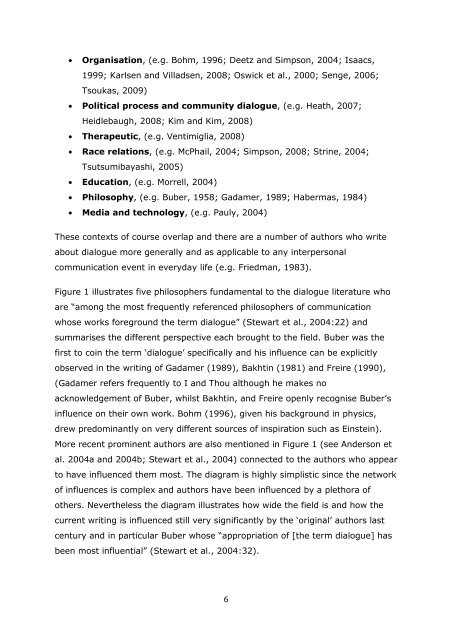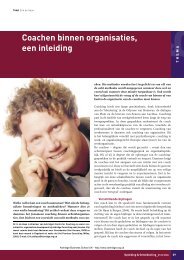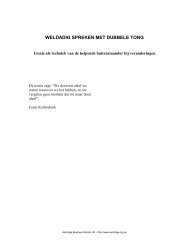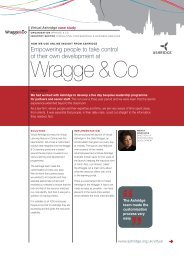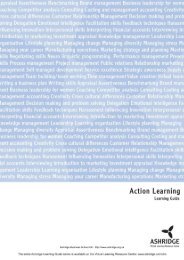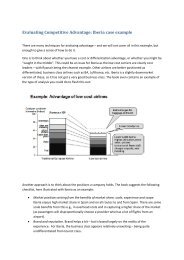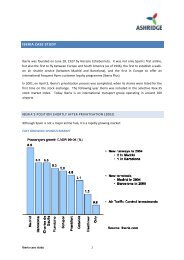“Dialogue – possible between leader and follower?” - Ashridge
“Dialogue – possible between leader and follower?” - Ashridge
“Dialogue – possible between leader and follower?” - Ashridge
Create successful ePaper yourself
Turn your PDF publications into a flip-book with our unique Google optimized e-Paper software.
• Organisation, (e.g. Bohm, 1996; Deetz <strong>and</strong> Simpson, 2004; Isaacs,<br />
1999; Karlsen <strong>and</strong> Villadsen, 2008; Oswick et al., 2000; Senge, 2006;<br />
Tsoukas, 2009)<br />
• Political process <strong>and</strong> community dialogue, (e.g. Heath, 2007;<br />
Heidlebaugh, 2008; Kim <strong>and</strong> Kim, 2008)<br />
• Therapeutic, (e.g. Ventimiglia, 2008)<br />
• Race relations, (e.g. McPhail, 2004; Simpson, 2008; Strine, 2004;<br />
Tsutsumibayashi, 2005)<br />
• Education, (e.g. Morrell, 2004)<br />
• Philosophy, (e.g. Buber, 1958; Gadamer, 1989; Habermas, 1984)<br />
• Media <strong>and</strong> technology, (e.g. Pauly, 2004)<br />
These contexts of course overlap <strong>and</strong> there are a number of authors who write<br />
about dialogue more generally <strong>and</strong> as applicable to any interpersonal<br />
communication event in everyday life (e.g. Friedman, 1983).<br />
Figure 1 illustrates five philosophers fundamental to the dialogue literature who<br />
are “among the most frequently referenced philosophers of communication<br />
whose works foreground the term dialogue<strong>”</strong> (Stewart et al., 2004:22) <strong>and</strong><br />
summarises the different perspective each brought to the field. Buber was the<br />
first to coin the term ‘dialogue’ specifically <strong>and</strong> his influence can be explicitly<br />
observed in the writing of Gadamer (1989), Bakhtin (1981) <strong>and</strong> Freire (1990),<br />
(Gadamer refers frequently to I <strong>and</strong> Thou although he makes no<br />
acknowledgement of Buber, whilst Bakhtin, <strong>and</strong> Freire openly recognise Buber’s<br />
influence on their own work. Bohm (1996), given his background in physics,<br />
drew predominantly on very different sources of inspiration such as Einstein).<br />
More recent prominent authors are also mentioned in Figure 1 (see Anderson et<br />
al. 2004a <strong>and</strong> 2004b; Stewart et al., 2004) connected to the authors who appear<br />
to have influenced them most. The diagram is highly simplistic since the network<br />
of influences is complex <strong>and</strong> authors have been influenced by a plethora of<br />
others. Nevertheless the diagram illustrates how wide the field is <strong>and</strong> how the<br />
current writing is influenced still very significantly by the ‘original’ authors last<br />
century <strong>and</strong> in particular Buber whose “appropriation of [the term dialogue] has<br />
been most influential<strong>”</strong> (Stewart et al., 2004:32).<br />
6


